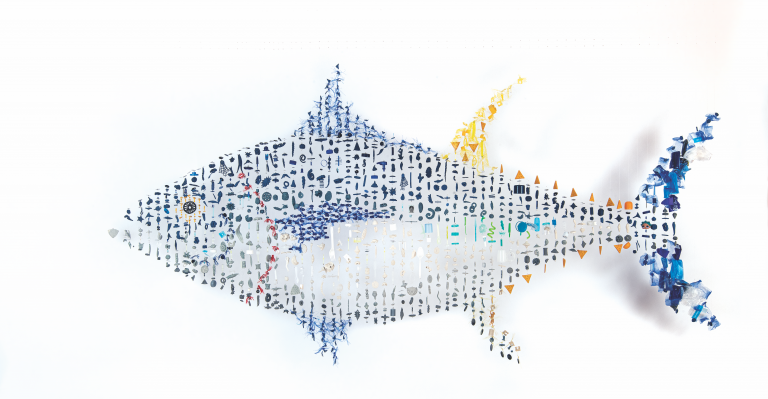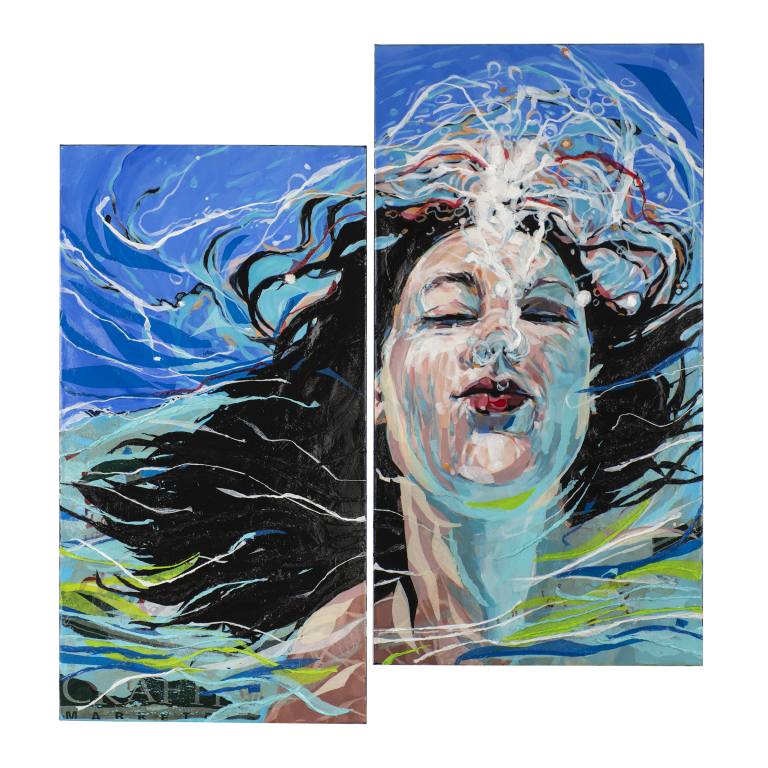One of the first great truths we learn as kids is that oil and water don’t mix. The same holds true for plastic and water, perhaps not surprisingly since the former is mostly made of oil. Plastic has now found its way into oceans around the globe. It seems to me that ocean plastic pollution is essentially a massive, global oil spill. Though not as immediately destructive as a liquid oil spill, the impacts are real, and they’re pervasive. Some plastic sinks, some of it floats, but it never goes away. Meanwhile, winds and currents disperse it around the world.
This artwork is entirely fashioned from ocean plastic and other marine debris removed from the shores of Vancouver Island. My initial idea was inspired by the black, wave-like sandal “cutouts” I found underneath some drift logs on an island near Tofino. The black “waves” immediately reminded me of an oil spill. Made of closed-cell foam, a crude oil product, these cutouts are the manufacturing leftovers from flip-flops produced in Southeast Asia. They are absurdly common (I have personally found more than 100), come in a variety of colours and stay intact and afloat for decades.
All of the objects used in this artwork are, for the most part, presented as found. I want the viewer to discover these objects as I found them, with their worn edges, weathered changes and natural patina intact. Part of their attraction and inspiration is that each object has its own story, its own history and its own esthetic. As an artist, for me the magic is to bring these objects together, creating a synergy of the whole, yet still expressing their individual identities.
Of course, there’s always an exception. In this case, it’s the small raven. It was created by my friend and frequent collaborator, Tofino artist Dan Law. Fittingly, he carved it from a flip-flop with a distinctive lightning-bolt pattern embedded into the sole. These sandals exemplify ocean plastic pollution. They were spilled into the ocean from a container that was washed off a ship in the Pacific during the mid-1990s. Over the years, they have drifted far and wide. I found my first one in 1999 and have since collected them in Hawaii, Alaska, B.C. and even Japan. I still find them occasionally. They speak to the longevity of plastic and its presence throughout the world’s oceans. They also remind me that the old adage still holds — oil and water just don’t mix.
About the artist:
Pete Clarkson has been creating sculptures out of marine debris since he moved to Tofino to work at Pacific Rim National Park 18 years ago. He works with garbage he removes from the ocean or shorelines near his home. Clarkson’s works have been displayed at the Vancouver Aquarium and local galleries.
Emergence
by Kerry Hodgson









